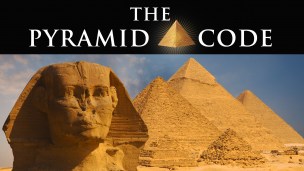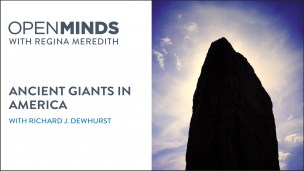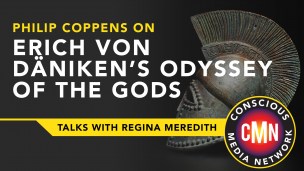Exploring ancient history reveals to us how little we know about humanity’s origins. There is more to the story than we are led to believe. Ancient cultures were highly advanced in the areas of geometry, math, astronomy and construction. Flying in the face of mainstream historians, there is strong evidence that shows a shared cultural connection between megalithic sites across the globe.
A megalith is a large stone that has been used to construct a structure or monument, either alone or together with other stones. The word “megalithic” describes structures made of such large stones without the use of mortar or concrete, representing periods of prehistory characterised by such constructions. For later periods, the term monolith, with an overlapping meaning, is more likely to be used.
The word “megalith” comes from the Ancient Greek “μέγας” (transl. megas meaning “great”) and “λίθος” (transl. lithos meaning “stone”). Megalith also denotes an item consisting of rock(s) hewn in definite shapes for special purposes. It has been used to describe buildings built by people from many parts of the world living in many different periods.
Source — Wikipedia
Carmen Boulter
Graham Hancock
Erich Von Daniken

Erich von Däniken
Erich von Däniken, born on April 14th, 1935 in Zofingen, Switzerland.
During his formative years at the renowned Collège St-Michel in Fribourg, Switzerland, Erich von Däniken immersed himself in ancient holy writings and unsolved archaeological puzzles. As a young gastronome, he began writing topic-related articles before eventually authoring his international best seller Chariots of the Gods. Erich von Däniken has held countless lectures and discussions at public forums and educational institutions. His 40 books have sold over 67 million copies and have been translated into 32 languages.
His bestselling books, Chariots of the Gods and Mysteries of the Gods have inspired two documentary films. The Baden-Baden-based television station Sudwestrundfunk filmed a three-part documentary on Erich von Däniken’s works.
In 1993, Erich von Däniken moderated a 25-part television series on SAT-I. Its success kept it in broadcast twice a month for a whole year.
In 1996, the US television network ABC produced a $1.2 million dollar documentary with Erich von Däniken. The German station RTL broadcast the film throughout Europe that the same year. With 4.57 million viewers, the show reached the highest audience rating on every channel. In total, 69% of the viewers were under 50 years of age. Even the rerun event on May 1, 1997 attracted 3.17 million viewers.
The world’s largest public broadcaster, ARD, produced a 1998 documentary about Erich von Däniken and in February of 2001, the British television station Twenty-Twenty also made a biography about Erich von Däniken. It was first broadcast on Channel 4 and has since travelled throughout the world. In 2009, the US television channel History began a groundbreaking series about Erich von Däniken’s hypotheses entitled Ancient Aliens. The series received the highest audience rating History has ever received. This success launched continued filming and by March of 2016, this series will boast a total of 120 shows while running in many languages throughout the world.
Starting in February of 2011, Erich von Däniken has written a regular column for the Swiss newspaper Blick am Abend. By March of 2016, 128 columns will have been published and the series is planned to continue.
Honours
Erich von Däniken has received many honours throughout the years. Including an honorary doctorate (Dr.h.c.) from the University of Bolivia (1975), as well as honorary citizenship from the city of Nazca, which gained notoriety through its mysterious lines and carvings. In the fall of 1987, he became an honorary member of the Cordon bleu du Saint-Esprit order together with the German astronaut Ulf Merbold. Erich von Däniken received the Premio Lourenço Filho in gold and platinum in Brazil. (Lurenço Filho was a Brazilian educator comparable to the Swiss Heinrich Pestalozzi).
In 2004, the World Explorer’s Club awarded Erich von Däniken with the World Explorer Prize. The ceremony was held at the University of Lodz in Poland.
On April 8, 2013, the Brazilian metropolis of Curitiba honoured Erich von Däniken for his entire body of work on unsolved mysteries from the past.
And the science…
Year after year, Erich von Däniken’s ideas gain more momentum in scientific circles. For example, the Nobel Prize holder Francis Crick published a book, Life Itself (Piper Verlag), where he states “Life on earth began in the form of micro-organisms that were sent into space towards Earth by a higher civilisation billions of years ago with an unmanned rocket.”
Together with the mathematics genius Nalin Chandra Wickramasinghe, the world-famous British astrophysicist Sir Fred Hoyle published the work Evolution from Space (Ullstein-Verlag), where the scientists support the idea that life was not created on earth and Darwinian theories should be amended. In reality, mutations came from intelligent lifeforms from space. Erich von Däniken initially proposed these same ideas in his 1977 work According to the Evidence (Chapter 5).
In the Journal of the British Interplanetary Society, No. 36, Dr. Robert A. Freitas from the Xenology Research Institute (Sacramento, California) suggested a new research project by the name of SETA. In contrast to the existing project SETI (Search for Extra-terrestrial Intelligence), SETA (Search for Extra-terrestrial Artefacts) would research evidence of extra-terrestrials in our solar system. This is the precisely what Erich von Däniken has done for 50 years.
The Russian scientist Dr. Vladimir V. Rubtsov suggested in 1980 at a symposium in Kaliga that a new branch of science by the name of Palaeovisitology be created. This new field describes extra-terrestrial visits in geological and prehistoric times.
At the 33rd conference of the International Astronautical Federation, held in Paris from September 27 to October 2, 1982, Dr. Michael Papagiannis, astronomer at the Boston University suggested searching for traces of extra-terrestrial intelligence in the asteroid belt: “We would look pretty stupid to future generations if we would continue to search for extra-terrestrial civilisations on far-distant stars while the answer could be found here directly in our solar system.”
In 1985, the first scientific anthology about Erich von Däniken’s topics appeared (Aus Den Tiefen Des Alles – From the Depths of Space – Grabert/Hohenrain-Verlag). The following scientists provided contributions for this:
- Dr. Luis Navia, Philosophy Professor at the New York Institute of Technology, New York, USA-Dr. Philip A. Ianna, Astronomy Professor at the University of Virginia, USA
- Dr. Harry O. Ruppe, Aerospace Engineering Professor at the Technical University Munich
- Prof. Dr. Sir Fred Hoyle, Astrophysics Professor, Great Britain
- Dr. Francis H.C. Crick, Nobel Prize holder and Microbiology Professor, San Diego
- Dr. Dileep Kumar Kanjilal, Sanskrit Professor at the Calcutta Sanskrit College, Calcutta, India
In the meantime, hundreds of book titles about Erich von Däniken’s ideas exist throughout the world by a multitude of authors. Countless television series and films are based on his thoughts, such as Stargate and Prometheus.
In general it can be concluded that despite criticism from conservative chairs, the science community is warming up to Erich von Däniken’s ideas more and more. Erich von Däniken is already no longer capable of fulfilling the countless requests for lectures and discussions.
That is why Erich von Däniken holds more and more lectures in closed societies like the Lions, the Kiwanis, the Rotarians, international corporations, banks and lodges. The Masonic Grand Lodge Grande Oriente Do Parana honoured Erich von Däniken in April of 2013 for his courageous life’s work in the city of Curitiba/Brazil.
Erich von Däniken is a member of the Swiss Pen-Club and the Swiss Writer’s Guild. He is a co-founder of the association for Archaeology, Astronautics and SETI (AAS), a non-profit association that deals with his topics. He also founded the Mystery Park in Interlaken, Switzerland and wrote all the texts for it. (Today: Jungfrau-Park).
Voices from the science world about Erich von Däniken’s theories:
“Erich von Däniken’s hypothesis will have an increasing effect on society, science, literature and art. Furthermore, he contributes to the solution to terrestrial problems. The search for extraterrestrial intelligence is a concern that affects all of humanity.”(Dr. Vladimir Avinsky, Geologist, Kuibyschew, Russia)
“This theory throws more light on the gathered documents about early human history than some other explanatory hypotheses. With this you have an extraordinary tool in your hands and you can detect the common theme throughout the confusing labyrinth of human development on this planet.”(Dr. Luis E. Navia, Professor for Philosophy, New York Institute of Technology)
“It is possible that extra-terrestrials visited our home planet in the past.”(Dr. Harry O. Ruppe, Professor for Aerospace Technology, TU Munich)
“Throughout the entire history of the Earth and life up to the time of historical records, the traces of extra-terrestrial intelligence on our planet are clear. It is a great task to detect the true backgrounds of countless historical puzzles and to reconsider the early history of humanity.”(Dr. Johannes Fiebag, Geologist, Bad Neustadt, Germany)
“Old Indian texts clearly prove that the Earth was visited and influenced by extraterrestrials in the distant past.”(Prof. Dr. Dileep Kumar Kanjilal, Professor for Sanskrit and Indology at the Sancrit College, Calcutta, India)
Source — www.daniken.com








